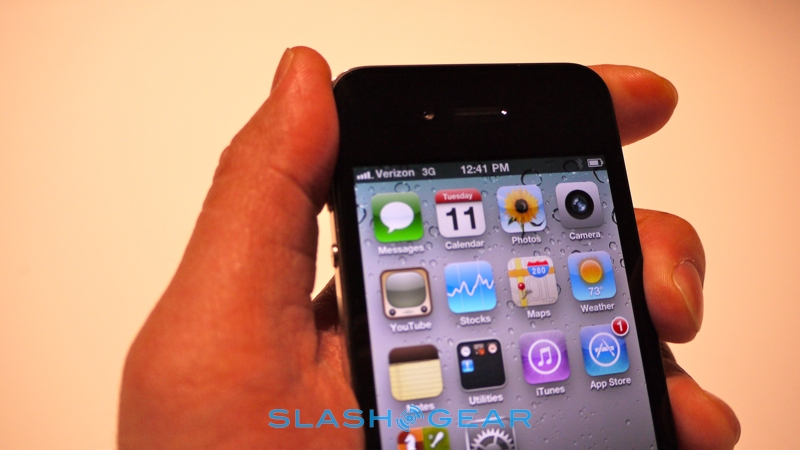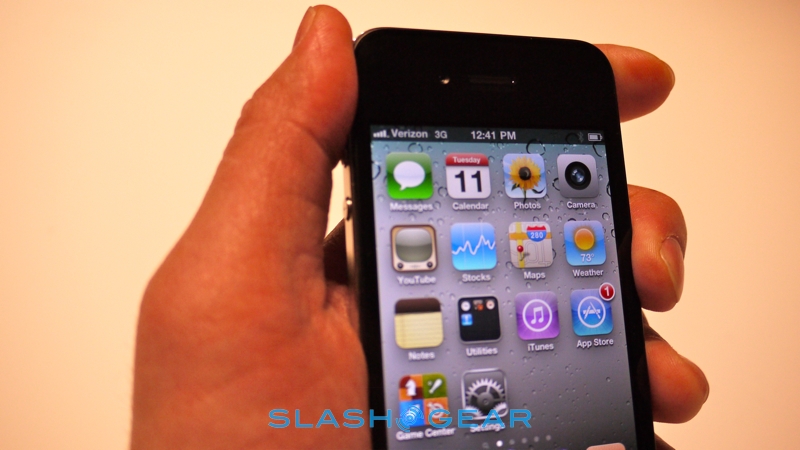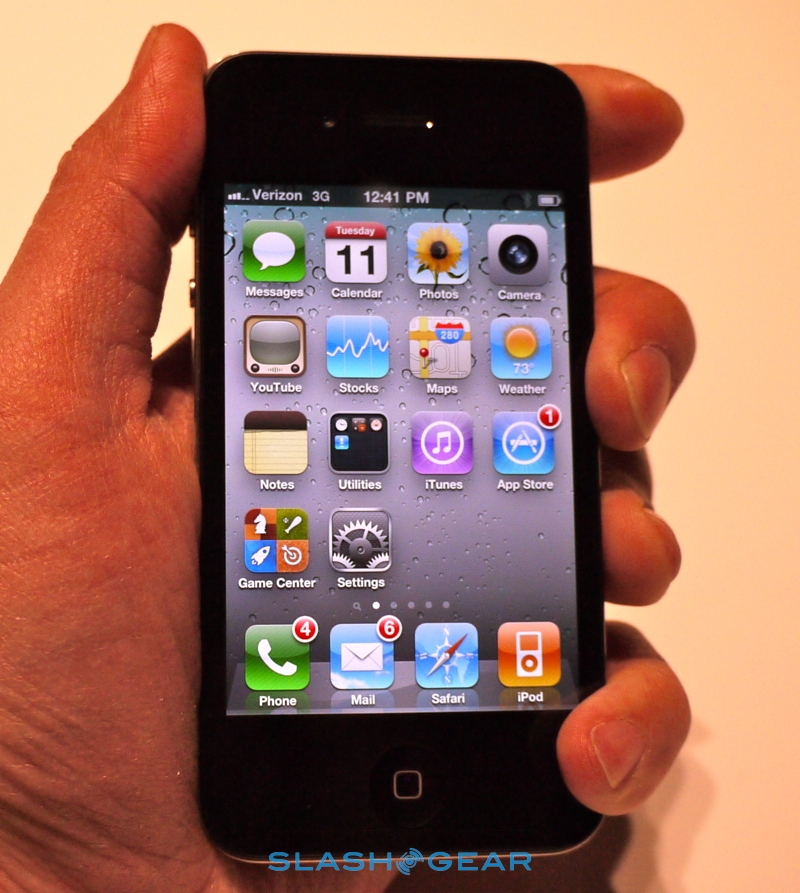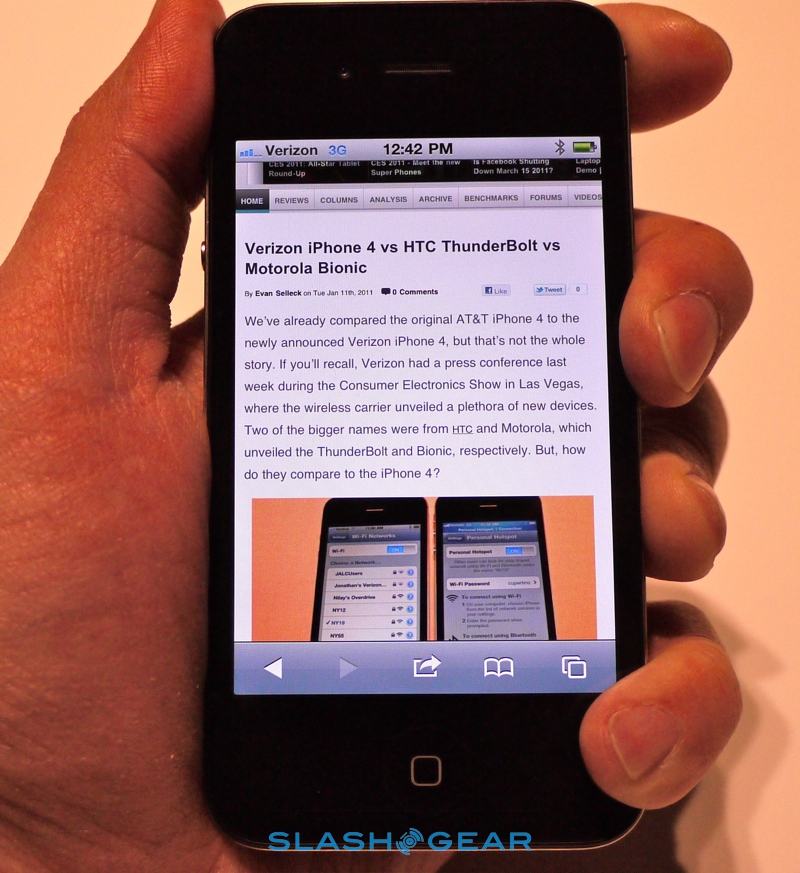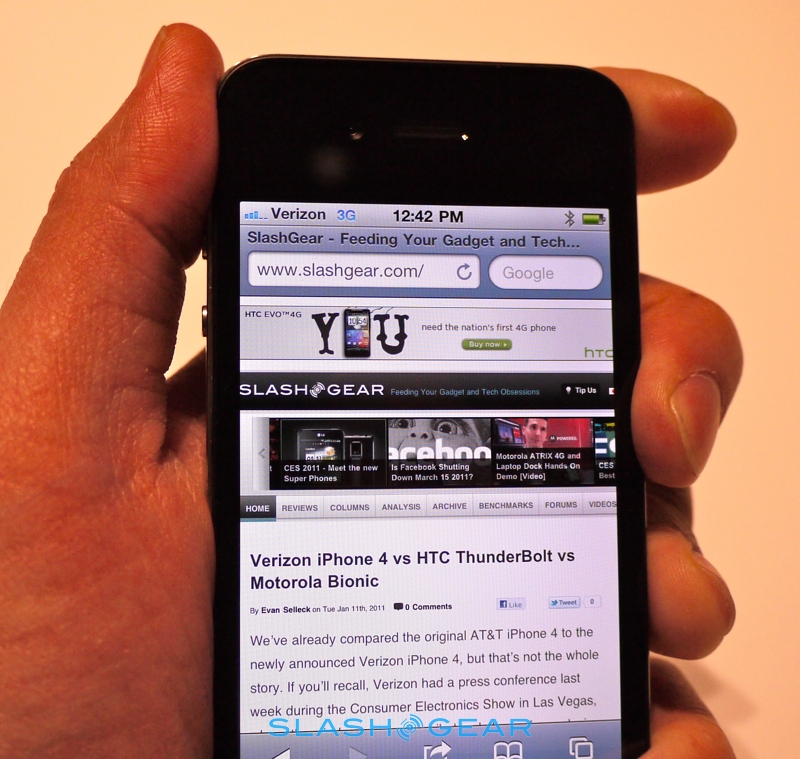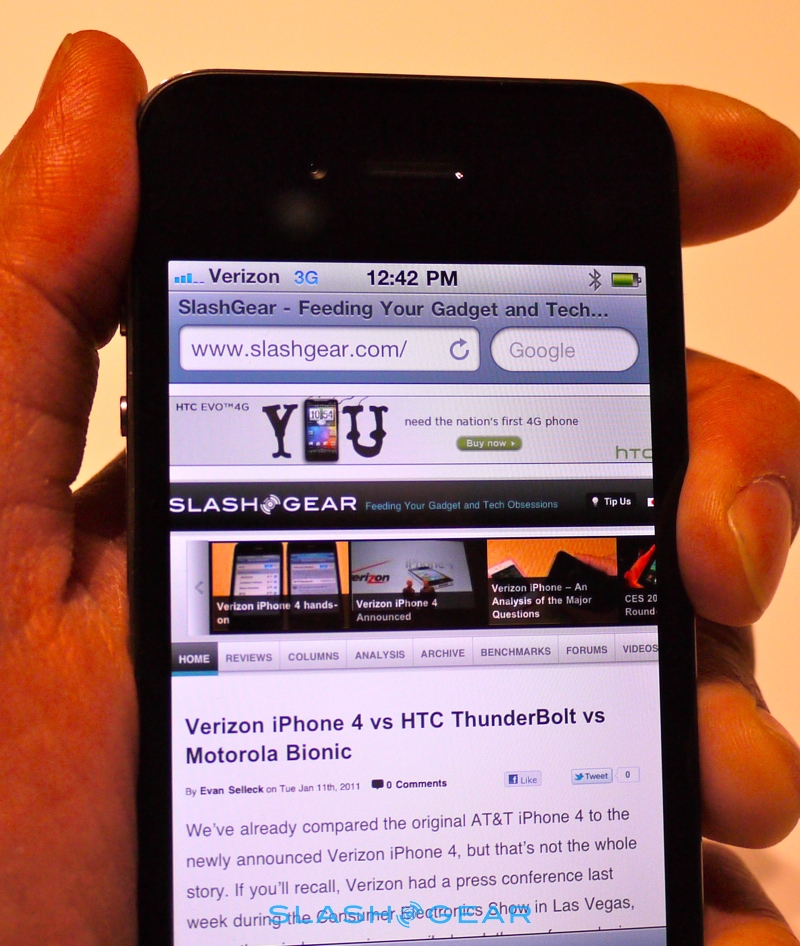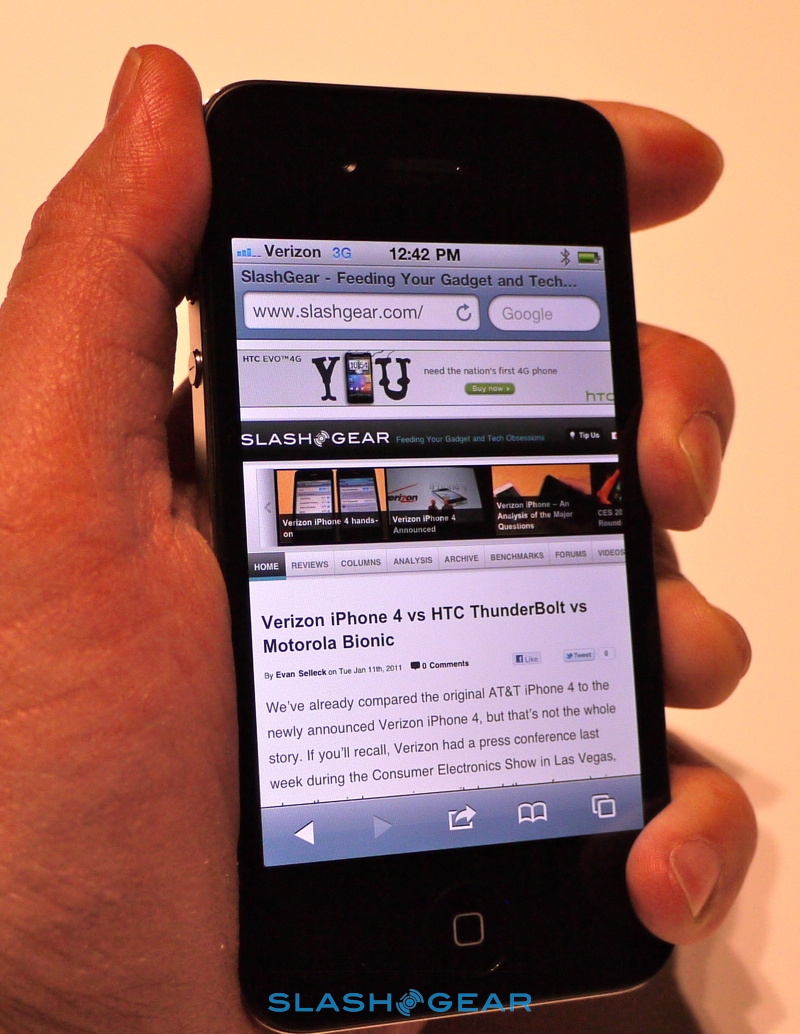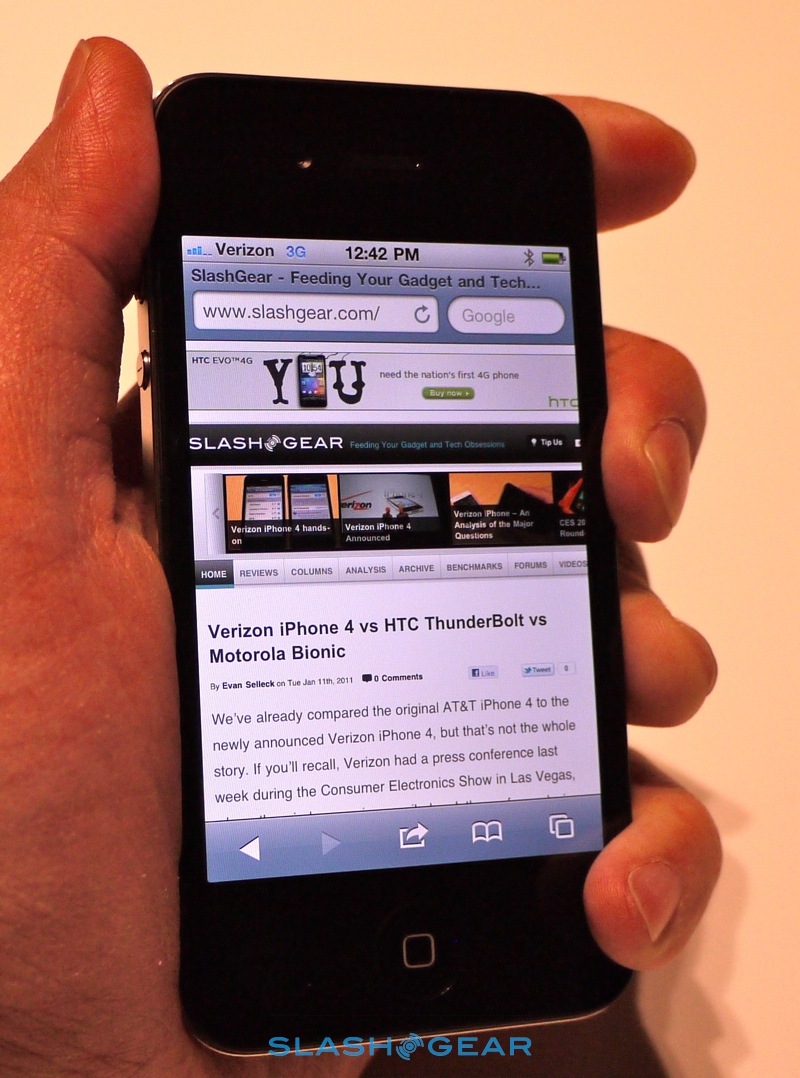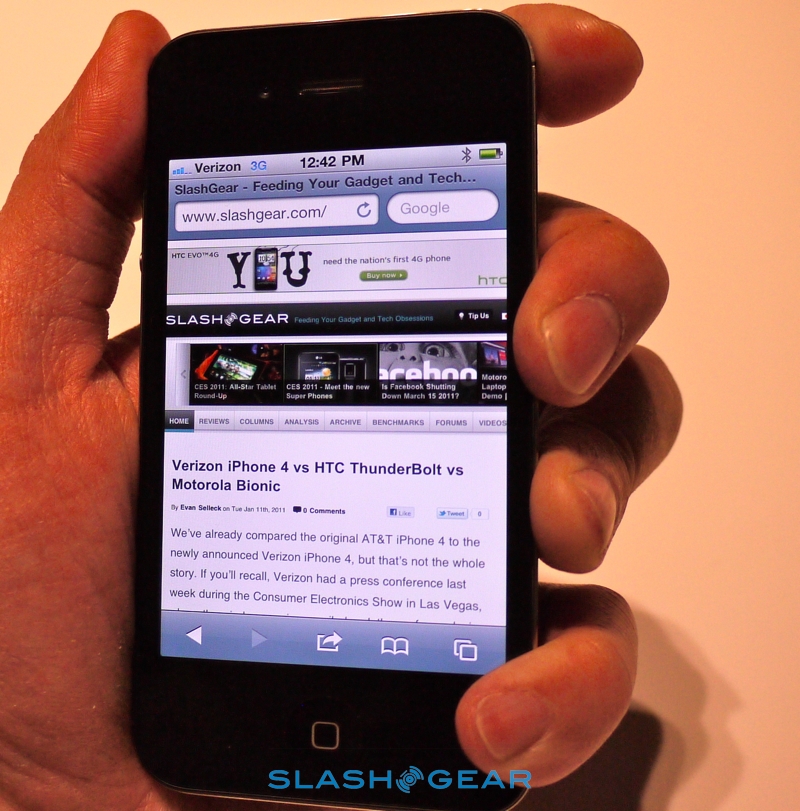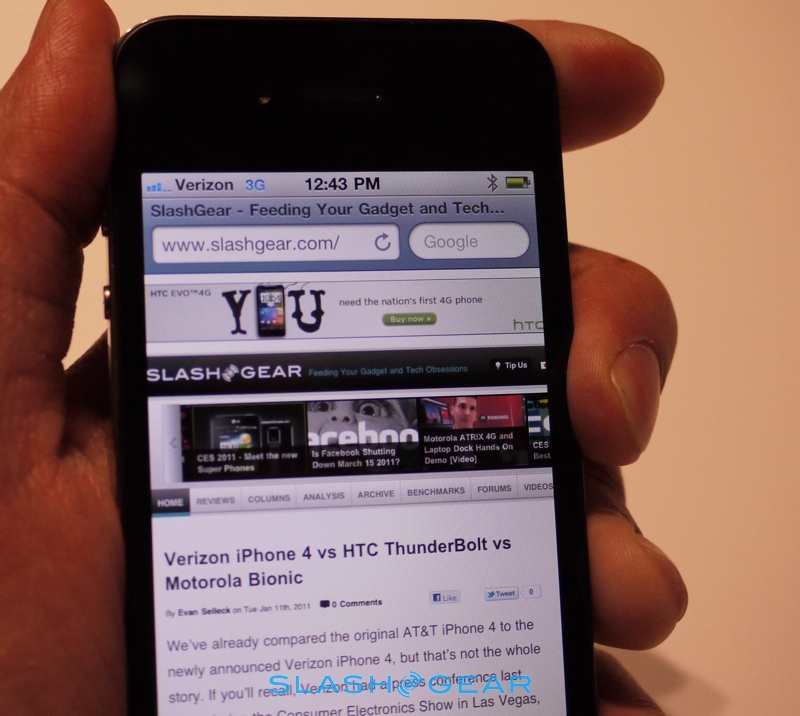Verizon iPhone 4 Doesn't Suffer from Death Grip
Now that the device is real, and we've managed to get some hands-on time with it, we were curious to see if Verizon's and Apple's claims that the only-slightly altered antenna version for the CDMA-based variant of the iPhone 4 (in the United States) wouldn't suffer from the same problems as its GSM cousin were true. We took the device in our hand, and we began to put our hand, and fingers, in all of the spots that the antenna usually suffered from. We managed to get some interesting results.
We put our hand in the standard "death grip" location, making sure that we covered up all of the right spots, and held onto the device for up to a minute. When we started the test, the device was at four bars. It should be noted that full service is represented on the iPhone 4 with 5 bars. So, the test started with only four bars being shown. As we held the device, and we timed it at a minute, we watched as only one bar disappeared.
We then put our fingers over certain points on the device. Making sure to cover up the "new" top portion of the antenna, and we still couldn't reproduce the "death grip" symptoms that plagued the initial launch of the iPhone 4. You can check out the images from our test below, but it looks like Verizon's confidence in the iPhone 4 on their network seem to be pretty sound.

